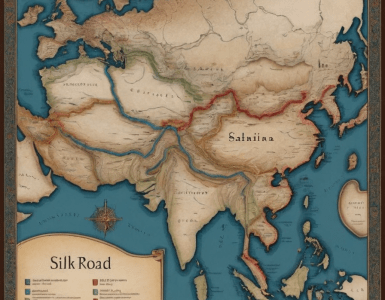Ever wondered why we celebrate Christmas on December 25th, or why we use the fork? These seemingly mundane aspects of our lives are tangled up in a fascinating web of historical events and cultural quirks, often in ways you’d never imagine. Let’s unravel some of history’s most surprising links between cultural practices and the twists and turns of the past. ¿Cuál es el significado cultural del Renacimiento?
The Curious Case of Christmas: Sun Gods and Roman Emperors
We generally associate Christmas with the birth of Jesus, but the date itself has a much older narrative. December 25th was already a significant date in the Roman calendar, marking the winter solstice and the celebration of *Sol Invictus*, the “Unconquered Sun.” Early Christians, cleverly (or perhaps coincidentally), adopted this date for the celebration of Christ’s birth. It was a brilliant strategy – aligning their new holiday with a pre-existing, widely celebrated festival helped with its adoption. So, next time you’re unwrapping presents, remember the sneaky sun god lurking in the background.
Forklore: From Fancy to Familiar
The humble fork, a ubiquitous dining utensil, wasn’t always so common. Believe it or not, its widespread adoption was relatively recent. Forks first appeared in Byzantine society, then spread slowly through Europe, often met with initial suspicion and even disgust. Some considered forks unhygienic, others saw them as an affront to God, assuming only the hands were pure enough to bring food to the mouth. The fork’s slow journey from an aristocratic novelty to a kitchen essential reveals a surprising cultural shift.
The Potato’s Power: From Famine to Feast
The potato has a dramatic story to tell. Initially introduced to Europe from the Americas, it was initially considered a novelty, an exotic plant more suited to animal feed than human consumption. Then it became a staple crop, especially in Ireland and parts of Europe. The reliance on this single crop, however, had devastating consequences, leading to the Great Famine of the 1840s. This tragic event not only reshaped Irish demographics but also highlighted the vulnerability of civilizations built on limited agricultural diversity. The potato’s story is a stark reminder of both the benefits and perils of cultural adoption.
Tea Time: A Global Confluence
Ah, tea. The humble cuppa has a surprisingly global history. Its journey from its origins in China, across the Silk Road, to Europe and beyond, is a microcosm of cultural exchange, trade, and conflict. The British East India Company’s aggressive pursuit of tea, in fact, fuelled conflicts and significantly shaped the political landscape of the 18th and 19th centuries. So, that comforting cup of tea is woven into a complex tapestry of imperial ambition and global trade.
The Unexpected Legacy of Genghis Khan
Genghis Khan and the Mongol Empire are often depicted solely as symbols of brutal conquest. What’s often missed is their role in inadvertently fostering peace and trade across the vast Eurasian steppes. The Pax Mongolica, a period of relative peace and stability under Mongol rule, facilitated the exchange of goods, ideas, and technologies between East and West, setting the stage for significant cultural blending. This demonstrates that even the most violent periods of history can produce unexpected and lasting consequences that shape succeeding civilizations.
Why Do We Shake Hands? A History of Greetings
Shaking hands, a common greeting across many cultures, has a deeper history than you might assume. The practice of showing your empty hands as a sign of peacefulness dates back to ancient times, offering assurance that you were not carrying weapons. Over time, this gesture evolved into the handshake we know today, a ritual that signifies agreement, trust, and mutual respect. The evolution shows how a gesture born of practicality and mutual safety transformed into a standard societal greeting.
The Mysterious Origins of the Alphabet
The alphabet, the foundation of written communication for so much of the world, has a surprisingly hazy origin. While the exact development is still debated, the story involves ancient Egyptian hieroglyphs, Phoenician adaptations, and centuries of linguistic evolution. The alphabetic system’s evolution is a testament to the power of cultural adaptation, showing how fundamental aspects of our civilization took shape through gradual changes and innovation across cultures and time.
The Silk Road’s Unforeseen Consequences:
The Silk Road, an ancient network of trade routes, is often romanticized as a simple system of exchange. However, its impact went far beyond mere trade. It facilitated the spread of religions, ideas, and diseases across continents, impacting everything from the development of major religions to the demographic shifts across continents. The Silk Road’s legacy is a vivid reminder of the complex and far-reaching effects of global interconnectedness.
A Note on Cultural Appropriation:
While exploring these historical links, it’s crucial to be sensitive to the issue of cultural appropriation. Borrowing from diverse cultures can lead to enriching cultural exchange, but it’s crucial to do so with respect and understanding, acknowledging the source and history of specific practices.
History is full of such hidden threads, connecting seemingly disparate events and traditions. By exploring these connections, we gain a deeper understanding of our cultural heritage and the complex forces that shaped the world we inhabit today. So, next time you perform a seemingly mundane action, take a moment to consider its intriguing and often surprising background.

























Añadir un comentario